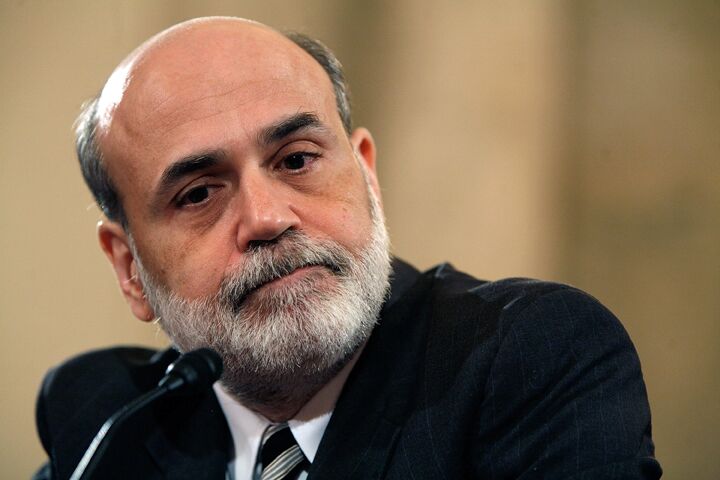
The U.S. Recession and the Zimbabwe Option
Statistics have finally confirmed what people have been feeling in their pocketbooks and in their stomachs. The United States officially sank into recession December last year. The National Bureau of Research made it official Monday. But will things get worse before they get better?
Private forecasters are warning that this downturn is likely to set a new postwar record for length and is likely to be more painful than any recession since 1980, according to the New York Times.
“We will rewrite the record book on length for this recession,” said Allen Sinai, Lexington-based Decision Economics president. “It’s still arguable whether it will set a new record on depth. I hope not, but we don’t know.”
Other analysts aren’t so optimistic.
Charley Blaine and Elizabeth Strott, writing for msn, say that although the economy sank at a 0.5 percent pace in the third quarter, “[m]any economists believe the economy will contract at a 5 percent pace this quarter.”
“[T]his is going to be the worst recession in the post-World War ii era, in our view,” warns David Rosenberg, North American economist for Merrill Lynch. His proof: plummeting durable goods orders; a near-record decline in consumer spending, a housing market not even close to bottoming out (expect another 15 to 20 percent decline from today’s prices); and the fact that the Fed is so worried about the economy that it is planning to slash interest rates to barely above zero. The economy is in far worse shape than many may hope.
Faced with the worst recession since World War ii, America has announced an unprecedented wave of stimulus packages. Over $8 trillion has been committed by government officials so far to combat the crisis. That is more than half the value of all goods and services produced in America for a full year. And with the “Great Recession” still in its early stages, we can expect more to come.
Where is the government going to get the money from to pay for all this spending?
Washington has two options—neither of them good. Increasing taxes is all but off the table, because the consumer is already stretched to the limit and a big tax increase would be political suicide. That leaves a) borrowing, or b) creating new money.
As far as borrowing goes, who would lend money to the United States? Americans are already engorged on debt, and foreigners are reaching their lending limit. Countries around the world, including China and Japan—America’s two most important creditors—are announcing economic stimulus packages of their own. They now have their own problems to deal with, which require their own money. In an omen of what is to come, a couple of months ago, Germany had trouble finding buyers for its government debt. Germany is economically one of the strongest nations in the world, and the strongest in Europe. It was eventually able to sell its bonds—but if it had trouble, America, with its massive and growing debt loads, is likely to have difficulty finding lenders in the future as well. Plus, America is now competing with many other countries for bailout money: The United Kingdom, Italy, even the Canadians are talking about stimulus packages.
So, at a time that America expects to borrow record amounts, the world has less money to lend.
Again, where is the money going to come from?
America’s Plan B is the Zimbabwe option: creating money out of thin air. The Fed will not be quite as blatant as Zimbabwe’s Robert Mugabe—America has much more sophisticated mechanisms. The U.S. Treasury will not crank the printing presses into overdrive, or drop money from helicopters. The dollar-creating will be thinly disguised as things like tax rebate checks, stimulus packages and Federal Reserve loans to troubled financial institutions. However, the end result—though it will take longer to get there—will be much the same as what is taking place now in Harare.
Simply inventing more money is not the route to national wealth. If wealth was as simple as turning on a printing press, the government would have made us all millionaires long ago.
The Zimbabwe option, what appears to be the only viable way to pay for all of America’s deficit spending, runs the real risk of completely discrediting the dollar and destroying its purchasing power.
The more than $8 trillion the government has committed to propping up the system, plus the hundreds of billions more that are sure to be approved during the next administration, will inevitably devalue America’s currency.
The economic stimulus plan is no solution to America’s economic breakdown—it is just more of the problem. More borrowing and spending will not solve the banking sector’s breakdown (which was caused by too much borrowing and lending), or the housing collapse (caused by consumers borrowing and spending more than they could afford), nor the looming wave of corporate bankruptcies (due to high debt leverage).
If you keep doing what you are doing, you will keep getting what you are getting.
The recession is here. Depression is on the way.
Prepare now to reduce your standard of living. For information on how to put your house in order, read “How You Can Prosper in a Recession!” and The Seven Laws of Success.



